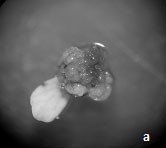PHENOLIC COMPOUNDS OF GREAT BURNET SANQUISORBA OFFICINALIS (L.) CELL CULTURE
Abstract
Callus cultures were obtained from the seeds of great burnet plants. Long-passed suspension cultures were obtained by transferring callus cultures to a liquid medium. The increase in the biomass of the suspension culture for the passage was 501%, the yield of dry biomass was 120 mg/g wet weight. The content of methanol-extracted phenolic compounds in the suspension culture increased during the passage and reached a maximum (34.6 mg/g dry weight) on the 22nd day of cultivation. An HPLC analysis of the phenolic compounds of the suspension culture and the rhizomes of the herbaceous plants was carried out. The proportion of some phenolic compounds in the obtained culture is significantly higher compared to their proportion in the rhizomes of plants. Such compounds were gallic, ferulic and caffeic acids, as well as condensed tannins. The obtained culture can be an object for conducting experiments on enhancing the synthesis of phenolic using various inductors. All this allows us to consider the obtained culture as a potential source of biologically active phenolic compounds.
Downloads
Metrics
References
Gosudarstvennaia farmakopeia SSSR. 11 izdanie. [State Pharmacopoeia of the USSR. XI edition]. Moscow, 1987, vol. 1, 336 p. (in Russ.).
Nosov A.M. Lekarstvennyye rasteniya. [Medicinal plants]. Moscow, 2004, 350 p. (in Russ.).
Biernasiuk A., Wozniak M., Bogucka-Kocka A. Curr. Issues Pharm. Med. Sci., 2015, vol. 28(4), pp. 254–256. DOI: 10.1515/cipms-2015-0083.
Tanaka T., Nonaka G., Nishioka I. Phytochemistry, 1983, vol. 22(11), pp. 2575–2578. DOI: 10.1016/0031-9422(83)80168-X.
Popov I.V., Andreeva I.N., Gavrilin M.V. Pharm Chem J., 2003, vol. 37(7), pp. 360–363.
Sun W., Zhang Z.L., Liu X., Zhang S., He L., Wang Z. et al. Molecules, 2012, vol. 17(7), pp. 7629–7636. DOI: 10.3390/molecules17077629.
Cheng D., Cao X., Zou P., Yang P. Zhongcaoyao, 1995, vol. 26(11), pp. 570–571. DOI: 10.3390/molecules17077629
Duke J.A. Planta Med., 1992, vol. 58(6), pp. 499–504.
Nosov A.M. Appl. Biochem. Microbiol., 2012, vol. 48(7), pp. 609–624. DOI: 10.1134/S000368381107009X.
Murthy H.N, Lee E.J, Paek K.Y. Plant Cell Tissue Organ Cult., 2014, vol. 118(1), pp. 1–16. DOI: 10.1007/s11240-014-0467-7.
Ochoa-Villarreal M., Howat S., Hong S.-M., Jang M.O., Jin Y-W., Lee E-K., Loake G.J. BMB Rep., 2016, vol. 49(3), pp. 149–158. DOI:10.5483/BMBRep.2016.49.3.264.
Ishimaru K., Hirose M., Takahashi K., Koyama K., Shimomura K. Biotechnology in Agriculture and Forestry. Medici-nal and Aromatic Plants VIII, Heidelberg, 1995, pp. 427–441. DOI: 10.1007/978-3-662-08612-4_24.
Murashige Y., Skoog F. Physiol. Plant., 1962, vol. 15(3), pp. 473–497.
Rumyantseva N.I., Salnikov V.V., Fedoseeva N.V., Lozovaya V.V. Soviet Journal of Plant Physiology, 1992, vol. 39(5), pp. 98–103.
Singleton V.L., Rossi J.A. American Journal of Enology and Viticulture, 1965, vol. 16(3), pp. 144–158.
Ishimaru K., Makoto H., Takahashi K., Koyama K., Shomomura K. Phytochemistry, 1990, vol. 29(12), pp. 3827–3830. DOI: 10.1016/0031-9422(90)85341-C.
Marchyshyn S., Kudrja V., Zarichanska O. The Pharma Innovation Journal, 2018, vol. 6(8), pp. 274–277.
Kroes B.H., van den Berg A.J., Quarles van Ufford H.C., van Dijk H., Labadie R.P. Planta Med., 1992, vol. 58(6), pp. 499–504. DOI: 10.1055/s-2006-961535.
Sarjit A., Wang Y., Dykes G.A. Food Microbiology, 2015, vol. 46(4), pp. 227–233. DOI: 10.1016/j.fm.2014.08.002.
Kikuzaki H., Hisamoto M., Hirose K., Akiyama K, and Taniguchi H. J. Agric. Food Chem., 2002, vol. 50(7), pp. 2161–2168. DOI: 10.1021/jf011348w.
Genaro-Mattos T.C., Mauricio A.Q, Rettori D., Alonso A., Hermes-Lima M. PLoS One, 2015, vol. 10(11). DOI: 10.1371/journal.pone.0129963.
Furlan C.M., Motta L.B., Santos D. Тannins: What do they represent in plant life? // In book: Tannins: Types, foods containing and nutrition. Nova Science Publishers. 2011. Pp. 251–263.
Zhang Z.L., He L., Wang Z., Wang G.S. Molecules, 2012, vol. 17(12), pp. 13917–13922. DOI: 10.3390/molecules171213917.
Koleckar V., Kubikova K., Rehakova Z., Kuca K., Jun D., Jahodar L., Opletal L. Mini Rev Med Chem., 2008, vol. 8(5), pp. 436–447. DOI: 10.2174/138955708784223486.
Kiyoshi Tomiyama, Yoshiharu Mukai, Masahiro Saito, et al. BioMed Research International, 2016, vol. 2016, article ID 5730748, 7 p. DOI: 10.1155/2016/5730748.
Ayşe Şen. Oxidative stress studies in plant tissue culture // In book: Antioxidant Enzyme, InTech – Open Access Pub-lisher. 2012. Pp. 59–88. DOI: 10.5772/48292.
Patil R.A., Lenka S.K., Normanly J., Walker E.L., Roberts S.C. Plant Cell Rep., 2014, vol. 33(9), pp. 1479–1492. DOI: 10.1016/j.btre.2018.e00273.
See K.S., Bhatt A., Keng C. L. Rev. Int. J. Trop. Biol., 2011, vol. 59(2), pp. 597–606.
Wang J., Qian J., Yao L., Lu Y. Bioresources and Bioprocessing, 2015, vol. 2(5), pp. 1–9. DOI: 10.1186/s40643-014-0033-5.


This work is licensed under a Creative Commons Attribution 4.0 International License.
The authors, which are published in this journal, agree to the following conditions:
1. Authors retain the copyright to the work and transfer to the journal the right of the first publication along with the work, at the same time licensing it under the terms of the Creative Commons Attribution License, which allows others to distribute this work with the obligatory indication of the authorship of this work and a link to the original publication in this journal .
2. The authors retain the right to enter into separate, additional contractual agreements for the non-exclusive distribution of the version of the work published by this journal (for example, to place it in the university depository or to publish it in a book), with reference to the original publication in this journal.
3. Authors are allowed to post their work on the Internet (for example, in a university repository or on their personal website) before and during the review process of this journal, as this may lead to a productive discussion, as well as more links to this published work.











